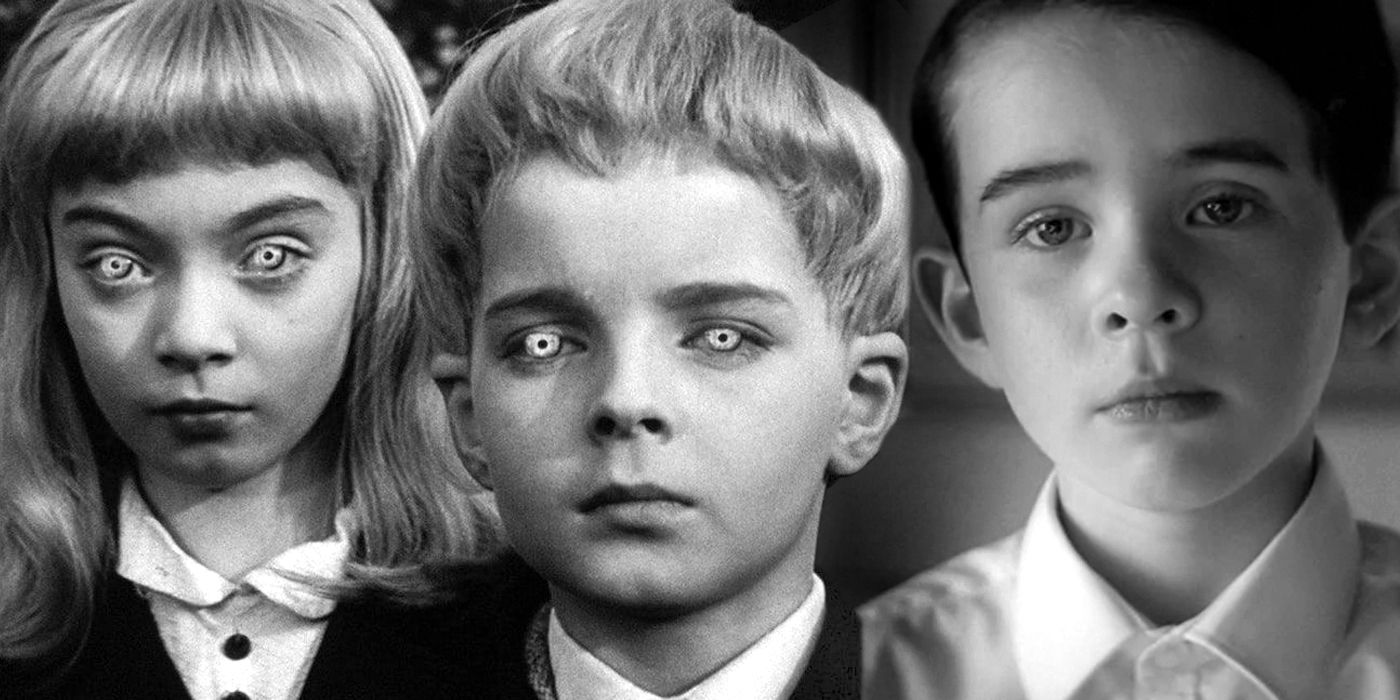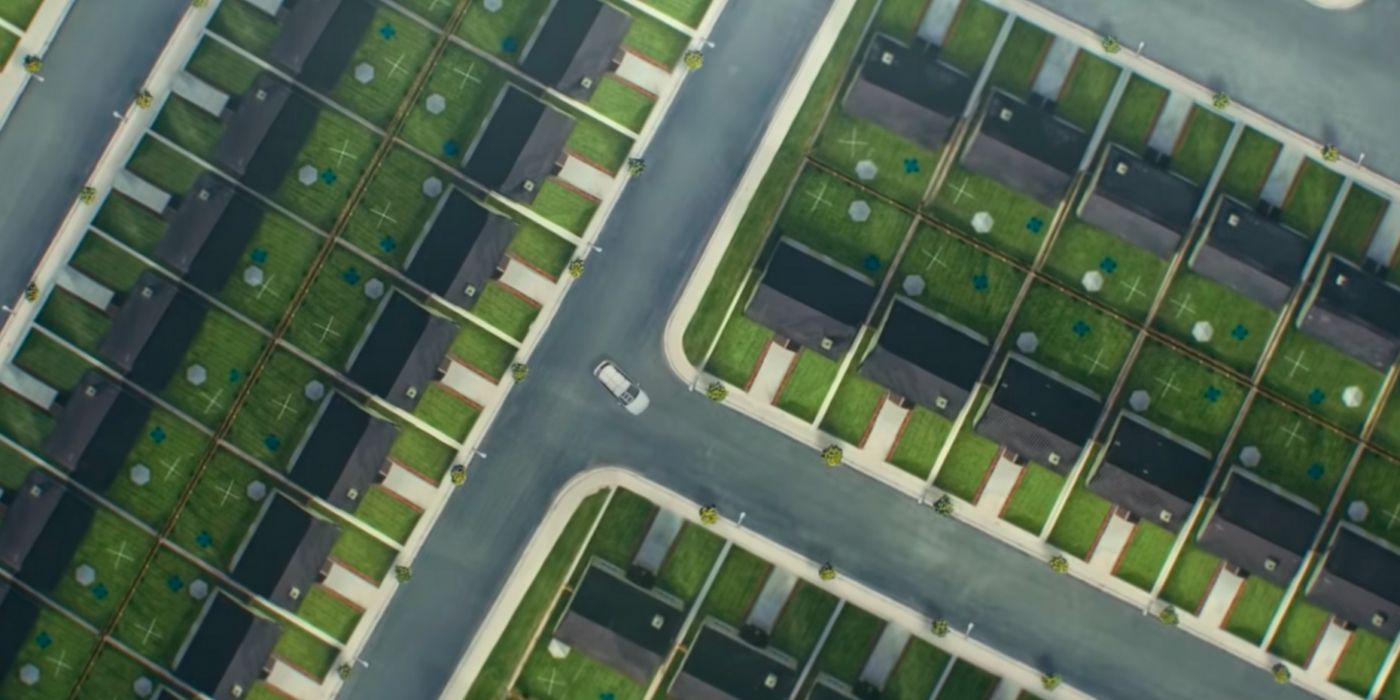Vivarium (2019) is a sci-fi horror movie that is obviously inspired by Village of the Damned (1960), regardless of whether or not filmmakers Lorcan Finnegan and Garret Shanely are explicitly aware of it. The films share a loose analogy to the natural phenomenon of brood parasitism, which is observed in cuckoo birds and is directly referenced by the opening visuals of Vivarium as well as in the title of the book on which Village of the Damned is based—The Midwich Cuckoos (1957).
Brood parasites are any creatures that manipulate a host creature into raising their offspring, often partially imitating the offspring of the host. This enables the parasitic creature to survive more efficiently than it otherwise would and at the expense of the host. This is exactly what happens in both films; however, despite this shared analogy, the stories of the two films are very different: Vivarium is about desperate homeseekers Gemma (Imogen Poots) and Tom (Jesse Eisenberg), who are abducted and imprisoned in Yonder—an inescapable imitation suburbia—where they are forced to raise a parasitic child; Village of the Damned is about Midwich—an idyllic town that is briefly paralyzed by an unknown power—and how its women are forced to conceive, bear and rear parasitic children.
But the similarities between the movies don't end there: Vivarium also borrows the "humanity is doomed" concept from Village of the Damned, which is set during the cold war and where "the damned" refers to human civilization. In Vivarium, the concept is not as prominent, but it is there; Gemma and Tom face the modern struggle of finding a home of their own, and are desperate not to be left behind, but they are doomed to fail because of the prohibitive housing market and the near impossibility of building the wealth required to access it, a fate presumably shared by many of their peers, if not most of humanity.
Vivarium's Yonder Is Midwich In Reverse
In Village of the Damned, the world's problems with war, disease and human misery are explicitly stated as a reason Midwich keeps the parasitic children alive so long. The film's protagonist, Gordon Zelleby (George Sanders), buys himself time to study the children by arguing that their powers could be the key to solving humanity's problems. Other countries around the world did not give their parasitic children as much time, and when they did, it wreaked havoc. Luckily for Midwich, Gordon finally figures out that the children are not saviors, despite their pleas to simply be left alone.
In Vivarium, Gemma and Tom are not so lucky. The parasitic creatures that they face are far more powerful and better organized than those faced by the citizens of Midwich. Gemma and Tom find themselves completely unable to escape their predicament and ultimately die as a result. The parasites in Vivarium don't seem to be bent on conquering the human race, but they do kill their hosts, which in some way makes them more nefarious. The parasitic children of Midwich claim they simply want to be left alone, but for Gordon, all signs point to ultimate human destruction.
In these and many other ways, Yonder can be seen as Midwich in reverse, including by how the analogy itself is constructed: in Vivarium hosts are brought to the nest that the parasites have built; whereas in Village of the Damned, the parasitic children are brought to the nest that the hosts have built. In Yonder, the survival of the parasites seems guaranteed; in Midwich, it is the opposite. Ultimately, both movies are analogies to the relationship between brood parasites and their hosts; but more importantly, they both use the analogy to highlight different facets of humanity's failures and weaknesses, as well as its ongoing fight for survival.


